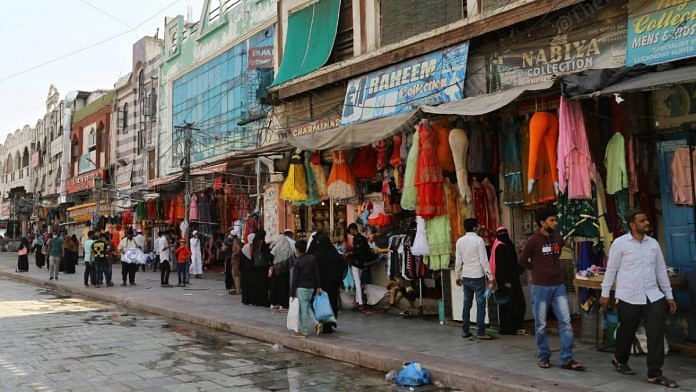New Delhi: India’s 2021 economic output is expected to remain below the 2019 level, the annual survey by the United Nations Economic and Social Commission for Asia and the Pacific (ESCAP) has said.
Produced annually since 1947, the Economic and Social Survey of Asia and the Pacific is the oldest UN report on the region’s progress.
Based on data available up to 9 March, this year’s survey report released Tuesday made the observation about India’s economic output while comparing the country’s coronavirus pandemic response with that of China.
It said India entered the pandemic with “subdued” GDP growth and investments after which a stringent lockdown caused economic disruptions that mounted in the second quarter of 2020.
Though India had an “impressive economic turnaround” in the third quarter of 2020, the pace of recovery moderated in the fourth quarter with estimated year-on-year growth was still close to zero, the report said.
“Despite a robust reduction in new COVID-19 cases and the start of vaccine roll-out, India’s 2021 economic output is expected to remain below the 2019 level,” the survey said, adding that maintaining low borrowing costs while keeping nonperforming loans in check would be a challenge.
In comparison, China demonstrated a “swift and effective” response to Covid-19 and its 6.5 per cent year-on-year growth rate in the fourth quarter of 2020 “exceeded pre-pandemic growth levels”, said the survey, which also said it expects China’s economic recovery to further improve in 2021.
Also read: The 5 factors that will determine the shape of the Indian economy in 2021
89 mn could have been pushed back into extreme poverty
The survey covered over 50 countries such as India, Bangladesh, Bhutan, Iran, Australia, Japan, New Zealand and Afghanistan, and observed that economic policymaking in Asia and the Pacific region is mainly focused on economic growth, neglecting investments in people and in building resilience.
Due to the pandemic, an additional 89 million people in the region could have been pushed back into extreme poverty, living on $1.90 per day (less than Rs 145), said the report. It also found that working hour losses in 2020 was equivalent to 140 million full-time jobs.
To address this, the survey made recommendations such as making risk management “a part and parcel” of development planning and policymaking in countries and strengthening international assistance towards least developed countries that suffer from a significant “resilience gap”.
‘K-shaped recovery’ likely in South Asia
The survey said Asia-Pacific economies are expected to grow by 5.9 per cent in 2021 and 5 per cent in 2022, after an estimated contraction of 1 per cent in 2020. It also noted that countries in the region have demonstrated a “haphazard and less-than-adequate response” to economic and non-economic shocks brought on by Covid-19.
Though a “K-shaped recovery” is likely in South Asia, poorer countries and more vulnerable groups will be marginalised in the post-pandemic recovery and transition period, the report added.
A K-shaped recovery is a post-recession scenario in which one part of the economy begins to climb back up while another continues to suffer.
The survey proposed a “build forward better” policy package that it estimated would reduce the number of people living in poverty in the region by almost 180 million and cut carbon emissions by about 30 per cent in the long run.
Also read: Spike in Covid cases indicates bumpy road for Indian economy




One can peddle a 5 Trillions USD economy to the people who do not even know how many zero comes after 1 in a Trillion. Well, the peddler has covid-19 as an excuse now to get away from being held responsible for fantasy promise to the gullible, ignorant and innocent people. UN now makes it official the pipe dream was unachievable in any case.( India’s 2021 economic output is expected to remain below the 2019 level, the survey said). Again as with Demonetization, $5 Trillion fantasy shall never be told again to the public..
Yeah like congressi who loot people’s money and embarras the country at commonwealth. You may want a gov subsidised life. Not all do. India will become 5 trillion by 2026 march. Mark the date and come back
You may like congreesi money looting and embarrassing in common wealth and 2g scam. India will become a 5 triilion dollar economy by 2026 march. mark the calender and come back.
Que Sera Sera.